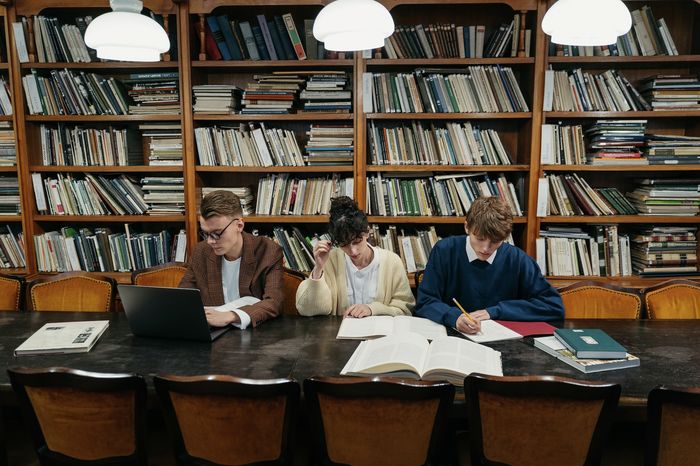Tour de Fashion: the dos and don’ts of bicycle attire
Nyahalo Tucker walks us through her definitive guide of how to strike a balance between fashion and functionality on the Cambridge cycling scene

I started the Easter term with a working bicycle, after a few too many failed attempts to transport it from home. Immediately, I was faced with a new dilemma: what was I supposed to wear to ride it? At home, circa 2020, whenever I was dragged out for a family bike trip, I wore exclusively joggers or leggings with my biggest (pyjama) T-shirts. The outfits were comfortable and required minimal changing from what I’d been wearing in bed minutes before leaving. But King’s Parade is no Thames Path, and so I set about finding a middle ground between convenient and Crushbridge-worthy attire.
After a week or so of cycling for a gruelling five minutes each day to and from department, almost getting hit by a bus at a roundabout, and nearly running over a small child, these were my findings:
“As the wind can act in cruel and unpredictable ways, trousers are typically considered the safest bet”
Skirts appear to be an obvious “no”. But this limits me to about 25% of my wardrobe so, after further investigation, I’ve concluded that miniskirts are a firm no. Pleated or flowy miniskirts are especially hard to cycle in, but cycle shorts underneath do help. When paired with a tighter-fitting miniskirt you could perhaps get away with it if cycling fast enough, but the range of motion is still pretty limited, and you’re left with a speed that leaves little to the imagination.
Maxi and midi skirts are surprisingly easy to ride in. If you hike them up like a Victorian lady, the bike ride is comfortable and fun. The larger and more voluminous the long skirt is, the better. Tight midi skirts that force you to walk in baby steps, however, are a big no. Ultimately, if any skirt is a hassle to walk in there is no reason it wouldn’t be even more of a nuisance to take for a spin.
“A friend of mine with an enviably cool boot collection chose fashion over practicality, and nearly didn’t make it home”
As the wind can act in cruel and unpredictable ways, trousers are typically considered the safest bet. However, if you’re anything like me, the majority of your trousers are aggressively baggy charity shop finds. If this is the case, cuffing them works as a quick and easy fix, that can be undone as soon as you’re off and walking again. Flared trousers would be another regrettable choice. The more dramatic the flare, the closer the material swings to the moving parts of the apparatus, threatening to catch on the chain and send you flying off your bike.
On the top half, (almost) anything goes. Though, again, anything with sleeves baggy enough to completely cover your hands should – sadly – probably be avoided. It would be smart to layer appropriately if you have to cycle for long periods of time, to avoid being a sweaty mess when walking into the department and to avoid freezing to death on a trip home. As you have probably heard before, a bright outer layer when cycling in the dark is advised. I applaud anyone who commits to a high-vis jacket, but any light coloured hoodie or coat may also reduce your chances of collision.
Finally, shoes. These aren’t a big problem for me as I wear the same beat-up white trainers every day. Meanwhile, a friend of mine with an enviably cool boot collection chose fashion over practicality, and nearly didn’t make it home. Anything that leaves your feet slipping and sliding may work when walking, but once on pedals, the shoes turn an otherwise leisurely journey into a terrifying ordeal. Shoes with grip are essential, and by this logic, dress shoes and heels should probably be avoided too.
I know that compared to Homerton and Girton veterans I am pretty late to the party, but I still hope that my comprehensive guide helps to widen your cycling horizons or even saves you from an embarrassing “wardrobe-malfunction-induced” accident. In the end, you can never truly know if an outfit is bicycle appropriate until you try it out. And of course, remember to wear a helmet because your hair might look good, but I promise you, keeping your brain function intact looks even better.
 News / Cambridge students set up encampment calling for Israel divestment6 May 2024
News / Cambridge students set up encampment calling for Israel divestment6 May 2024 News / Cambridge postgrad re-elected as City councillor4 May 2024
News / Cambridge postgrad re-elected as City councillor4 May 2024 News / Proposed changes to Cambridge exam resits remain stricter than most7 May 2024
News / Proposed changes to Cambridge exam resits remain stricter than most7 May 2024 News / Some supervisors’ effective pay rate £3 below living wage, new report finds5 May 2024
News / Some supervisors’ effective pay rate £3 below living wage, new report finds5 May 2024 Fashion / Class and closeted identities: how do fits fit into our cultures?6 May 2024
Fashion / Class and closeted identities: how do fits fit into our cultures?6 May 2024





